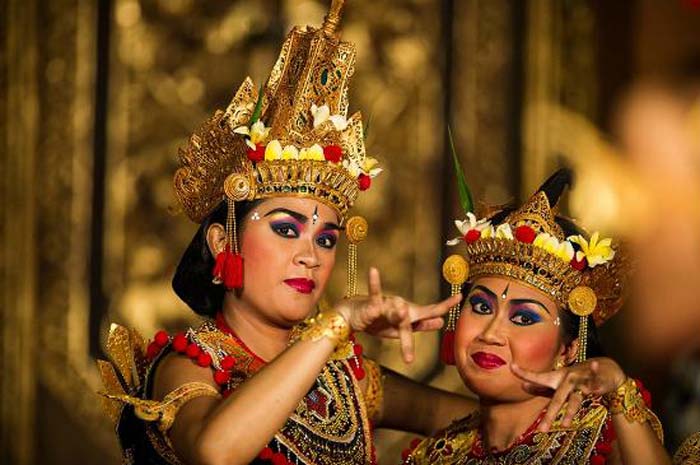
Legong Dance

Legong is Balinese traditional dance with intricate finger movements, complicated footwork, expressive gestures and facial expressions.
Traditionally, it's performed by pre-pubescent girls who begin rigorous training from about the age of five. These dancers were regarded highly in the society and usually become wives of royal personages or wealthy merchants.
Interestingly, it is said that the original legong was danced by young boys in the courts and it was named Nandir. Legend has it that on around 1825, a prince of Sukawati named Dewa Karna Agung saw a beautiful heavenly nymphs dancing the legong dance in a vision whilst in deep meditation in the local temple. Based on his vision dancers were sought to fit the part but as no girls in the village were beautiful enough to fit the part, masks were made to cover dancers faces.
Unbeknownst to most people, including the Balinese, there are more than fifteen different stories in the legong repertoire with names such as Jobog (monkey kings), Kuntul (pied stilts) and Lasem (a Majapahit King).
Today the most common legong dance is Legong Keraton, so named by the Sultanate of Keraton Surakarta when the music and dance composer and genius I Wayan Lotring from Kuta was invited to perform in the 1920s with his pelegongan group in the keraton (palace) in Surakarta. Around a decade before, the Condong part of the performance was added by composer and musician, AA Peririt from Sukawati. A complete Legong Keraton performance is made up of more than ten parts. However, these are customarily cut for tourist performances; today it is very rare to see a complete Legong Keraton performance.
The word legong has been interpreted differently by a number of academies. One translation is that the word is made up of two words: Lega meaning happy and Ing wong meaning person – being put together, it is “something that makes people happy”. Another one is oleg meaning dance and gong meaning gamelan, the set of musical instruments played accompanying the dance.